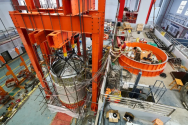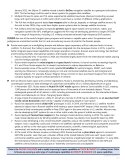These are all fair points, but the fact is they did fall short of their announced goal, even if it was mostly just commercial entities failing to improve as fast as predicted. This is a goal they themselves announced so it's not like it's something random uninvolved people speculated was their goal, they deliberately set this goal and fell short. This is why I objected to categorizing it as all just "deliberate strategic pacing". This brings me to:First, I recommend reading this article (). After checking related materials, it’s clear that China’s 2024 space launches saw minimal delays or changes in national-level projects. The main shortfall came from commercial launch companies, which fell short by at least 22 planned launches.
This is totally normal. Startups and early-stage tech products often face instability and delays—it’s part of the process. Look at U.S., European, Japanese, Russian, or Indian space companies: except SpaceX, whose launch schedules aren’t constantly slipping? Even SpaceX’s Starship is behind schedule. The only reason Falcon 9 looks "stable" is because it’s a mature rocket focused on launching its own Starlink satellites. When Falcon 9 handles external payloads, it still gets delayed—like the recent crew return mission that was postponed multiple times.
China’s new space companies are testing brand-new rockets, so delays and hiccups are expected. They’ll need a few years to iron out the kinks.
If that is the case then aren't you basically saying the announced Thousand Sails/Guowang timelines are unfeasible and should be disregarded? If reusable rockets are more of 4-5 years away than at most 1-2 years away from large scale deployment then the announced Thousand Sails/Guowang timelines are completely unachievable. Why would they announce such targets if they (presumably) know it's completely impossible? Are these all old announcements before they realized how much more work it would take?SpaceX was founded around 2000. It took them 13–14 years to develop Falcon 9 v1.1–1.2, 15–16 years to achieve first-stage reuse (2010–2015), and 30 launches to refine the tech. The reuse process alone took 5–6 years.
Chinese companies, meanwhile, are mostly under 10 years old (many under 6). Expecting them to match Falcon 9 while also developing engines is unrealistic. Early-stage instability is natural.
Key points about China’s reusable rockets:
Most companies are still in the "single-use rocket" phase (≤5 launches over 1–2 years). Reusability R&D is just starting.
By 2030, not one company but a group of firms will likely achieve reusable tech—some faster, some slower.
I am somewhat surprised they didn't increase the priority/resources of the reusable rockets project given how Starlink since a few years ago has been demonstrated to be very significant for the military right now. In your telling they seem to just shrug and accept they will be very far behind until at least early 2030s.National Team: Building next-gen giants for lunar bases and beyond.
Private Firms: Glorified interns handling “homework” the state team delegated.
Last edited:














